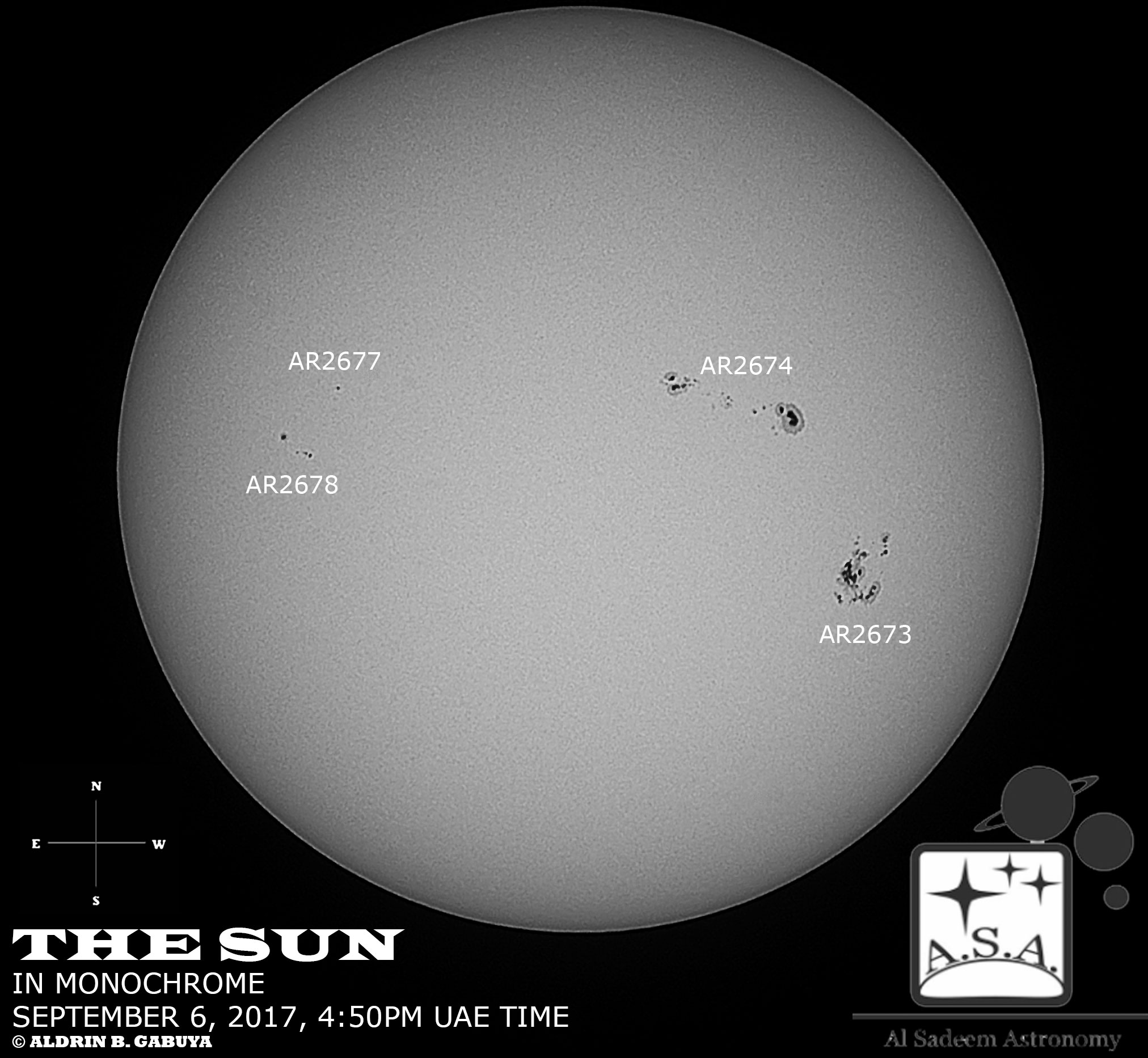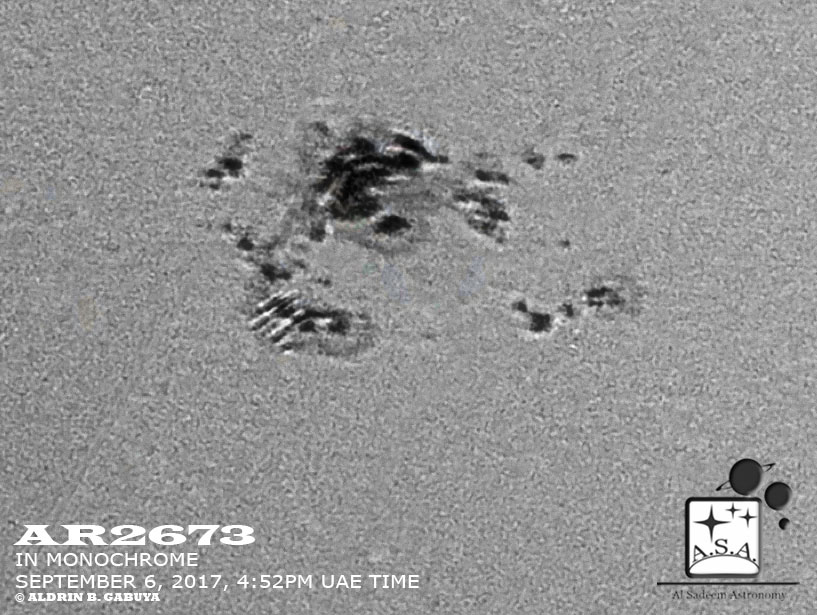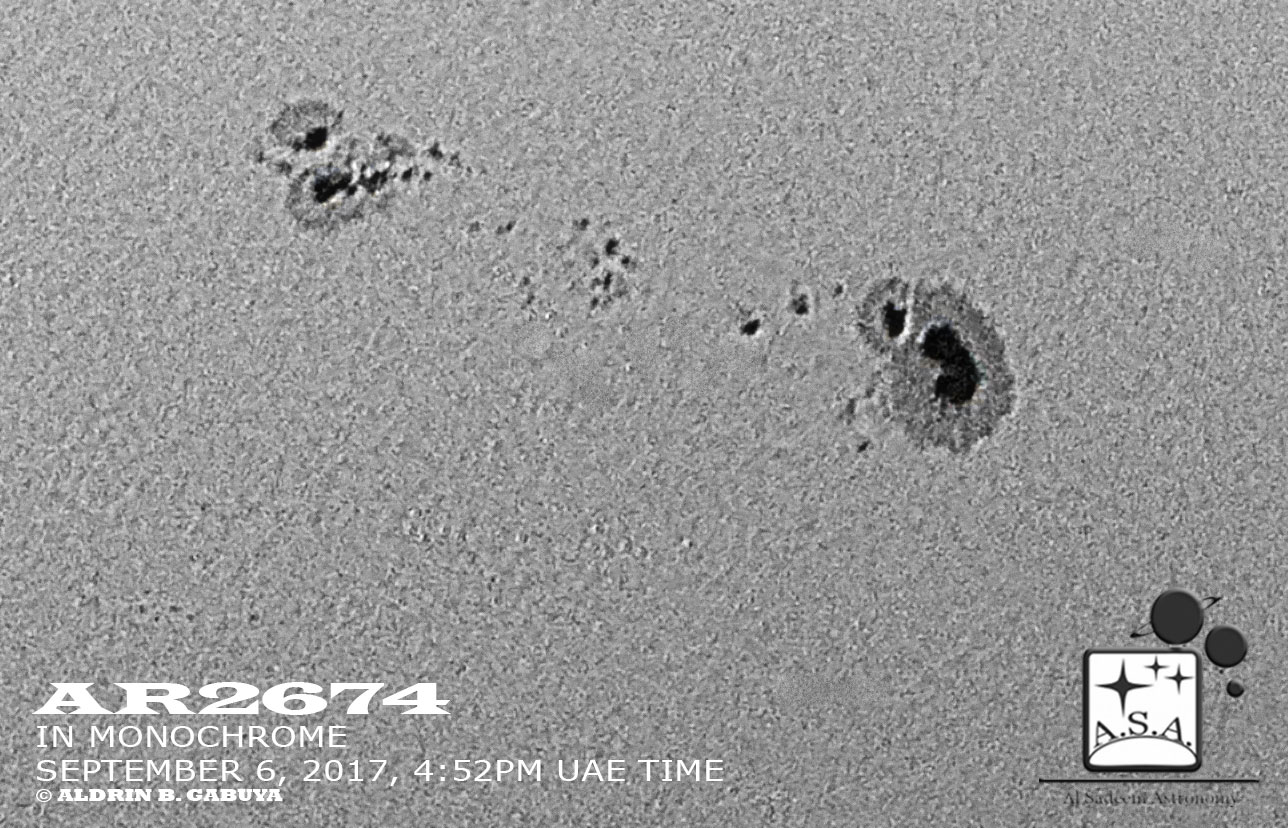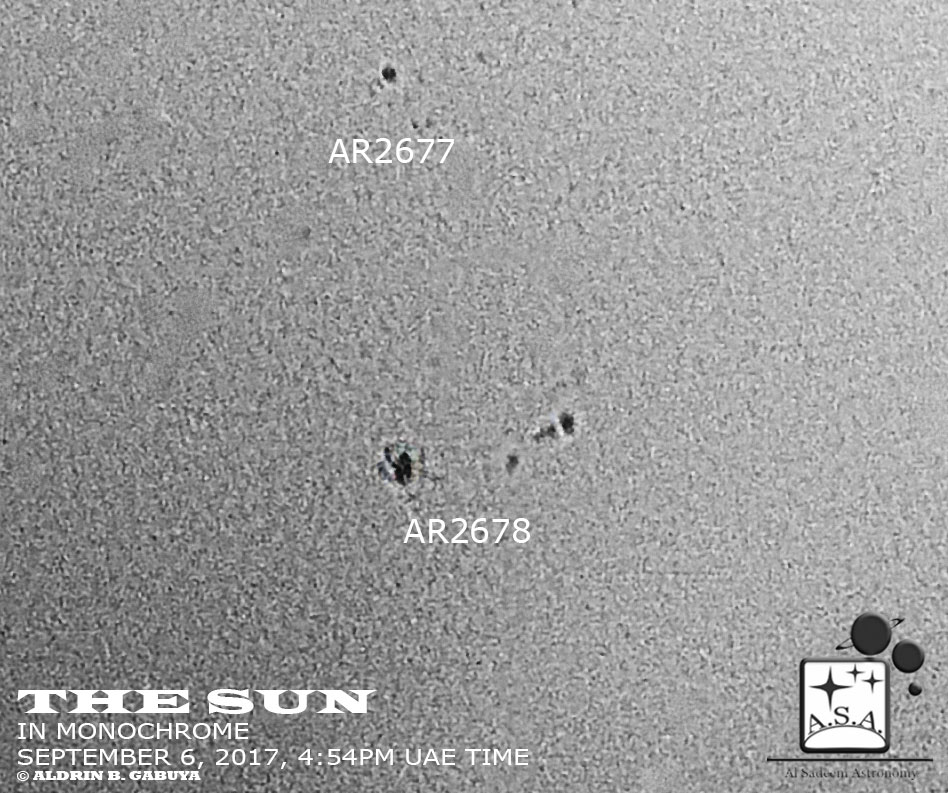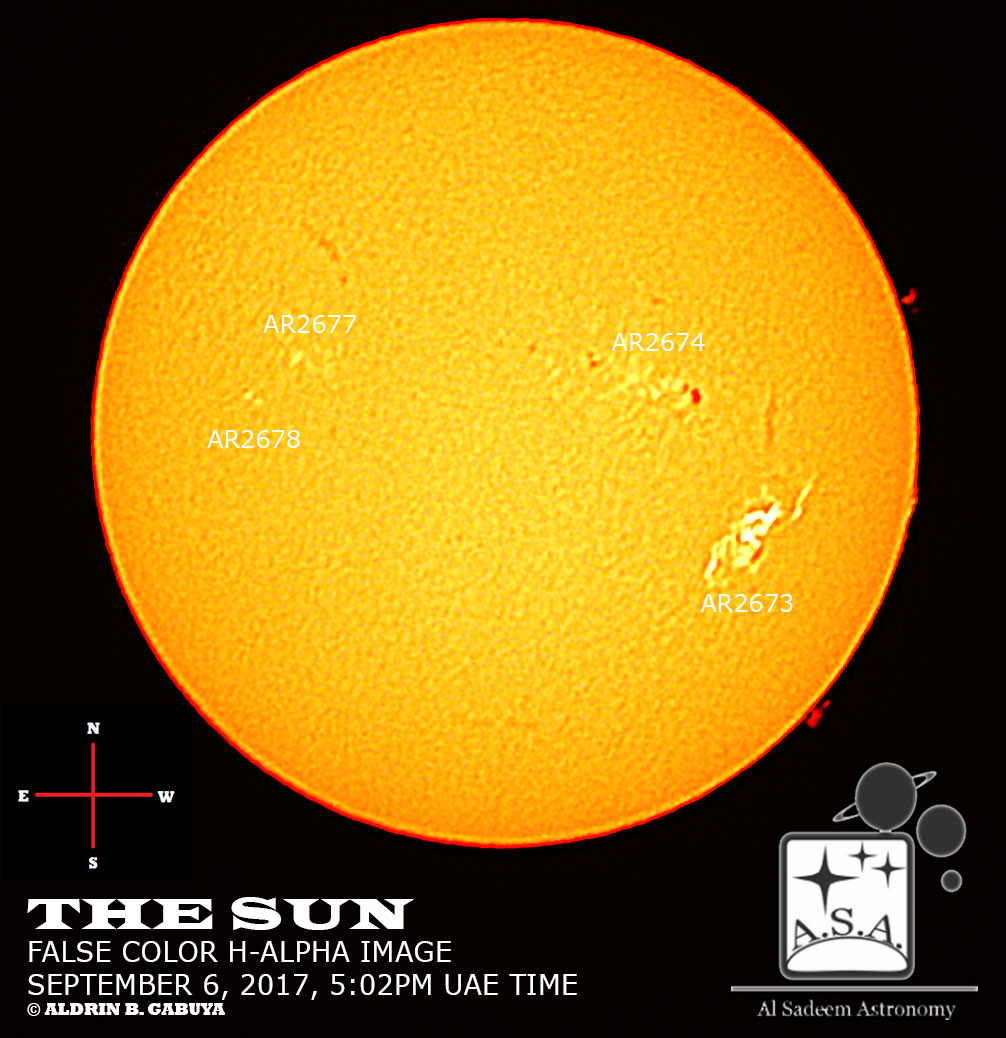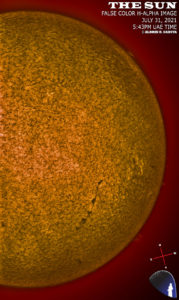Here are today’s solar images taken from Al Sadeem Observatory, September 6, 2017.
The sky was mostly clear but experienced intermittent light to moderate winds, making the seeing and transparency average at the time these images were taken.
The Sun remained dynamic with the current presence of four distinct active regions and high solar flaring activity. From the recent space weather reports*, over the past 24 hours, the well-developed magnetically composite AR2673 produced two strong X-class flares which caused strong shortwave radio and navigation satellite communication disruptions across the sunlit areas of the Earth (particularly over Europe, Africa and Atlantic regions), bright aurorae across the polar regions and sharp increase in x-ray and proton. On the other hand, despite its large structure, AR2674 became less active as it only emitted a single low-level C-class flare. AR2676 has departed on the Sun’s western limb at the time of capture. The remaining sunspot groups (AR2677 and newly-designated AR2678) were magnetically stable and inactive without any flaring activity recorded.
The latest sunspot number (based on visual count and Wolf number calculation) is 100.
With this stance, space weather agencies* predict relatively moderate to strong solar activity, with flare intensity ranging from B-class to C-class with a moderate chance of M-class and possibly up to X-class; most likely from AR2673 or AR2674) in the next few days. The extent of the frequency and intensity of the Sun’s activity will highly depend on the magnetic flux fluctuations happening in the visible ARs in the coming days. Close monitoring is being conducted by numerous space weather agencies for any significant development.
*courtesy of Solar Influence Data Center (SIDC), NOAA-Space Weather Prediction Center (NOAA-SWPC)
